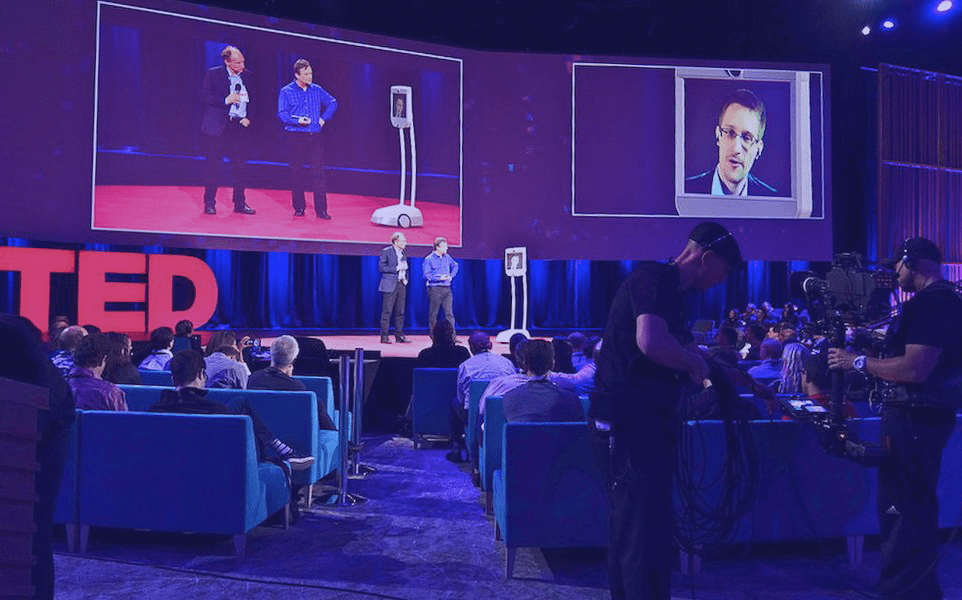10 rules for any executive navigating the new world of virtual conferences

Even as the world emerges from the pandemic, new platforms are popping up everywhere to help us navigate our increasingly virtual world. And some of their eye-popping valuations — Hopin reportedly is worth $5.7 billion — suggest that investors believe technology will have an outsized impact on group gatherings for the foreseeable future.
We lead companies that sit at the intersection of experience and technology, and we’re here to tell you: events are still — and always will be — about making good sh*t. In other words, content still rules, and no matter how elaborately your brand dresses up your conference stages or how seamlessly your chosen virtual event platform runs on event day, if you’re not delivering good content — if it’s ho-hum or played out — you will lose your audience and your credibility along with it.
Creating great content for your conferences is easier said than done, and requires partners with years of practice in creating unforgettable live content plus a pandemic-era refresh. It’s why our companies (Liberty & Co., an agency and consultancy in the experiences space, and Dreamtek, a leader in video production and streaming) have forged an exclusive partnership. Together we came up with these 10 rules for making events — from in-person to fully virtual — more engaging for our clients and thought we’d share them with you. Think of it as a guide to making good sh*t.
1. Always start with the why. It’s an obvious but often overlooked tenet of corporate events, and in the Time of Coronavirus, the “why” is even more critical than in Normal Times. People are juggling work and home responsibilities, more than ever before, there’s more streamed content available than ever before. Everything is just overwhelming these days and has been for more than a year. Make sure you and your leadership team create a mission statement for your event. Have an authentic point of view to guide your entire team of designers, marketers, content programmers. If the event doesn’t start (and end) with “why,” your audience will tune out and turn to something more urgent.
2. It’s all about the UX. When you have your why, think about the user experience that will best serve your customers, whether at home or in real life (IRL). News flash: It’s not all about you. It’s about them. Does it best benefit the audience to keep things small and intimate, or would going big better suit their needs? What does the IRL audience want? What does the virtual audience want? How do they want to be connected to each other? How can your team create that value for everyone, through your brand’s lens?
3. Embrace the hybrid. Even in a totally post-COVID-19 world, the overwhelming majority of corporate events will have a virtual component in addition to any IRL gatherings. Now that it’s possible to build one event that can be experienced globally, there’s really no going back. The double rainbow view is that going the hybrid route enables you to ramp up one channel when another one becomes cumbersome, whether it’s because of a rain delay or (gulp) a keynote speaker who doesn’t show up.
4. Pick your platform wisely. The platforms are but the tools, but your choice of tool will make all the difference—imagine what the Sistine Chapel would have looked like if Michelangelo only had a Bic pen. Or, more aptly, imagine trying to host an intimate incentive dinner for top sales performers at the New York’s Javits Center or a major trade show at boutique eatery Pastis. Your choice of platform determines your ability to deliver the right experience to your audience. Make the platform you choose your own by having your team customize the look and feel, integrating elements that reflect your brand. It’s your tool, make it cool. (Don’t forget to urge your team to negotiate volume discounts, test rates, or get the vendor to throw in extra tools. The competition is fierce out there so these platforms will wheel and deal.)
5. Timing is everything. We’re all global now. Be time zone sensitive. And be sensitive generally about what you’re asking of your customers, your speakers, and your staff when it comes to timing. “When” matters. Comic-Con got a lot of heat this spring for their decision to jump back into the IRL world with their San Diego flagship event this November—over Thanksgiving weekend. “What actor or producer is going to give up their first post-vaccine Thanksgiving holiday with family to travel to San Diego to publicize a project?” one studio rep recently fumed to The Hollywood Reporter.
6. Assemble an all-star team. Hiring a team with a diverse set of skill sets and experiences is essential to making magic. Every role matters, from the crew behind the scenes to the talent in front of the camera. And you’ll need a rock star project manager to make sure live elements and moments sync with your virtual and pre-recorded ones.
7. Prep. And prep again. Rehearsals and run-throughs are incredibly important regardless of whether you’re going IRL, virtual or hybrid. These events are complex. The whole Zoom call with the lawyer–cat was absolutely rip-roaringly hilarious to us, the unintentional audience, but probably not so much for whomever the attorney was representing, or the judge, or the lawyer himself. And a more recent example: The White House climate summit seems like it could have done with a few more tech checks.
8. Engagement counts. Now that we can measure everything, you undoubtedly have a clear sense of your key performance indicators even before you green light an event. If your goal is facilitating sales, come up with a target revenue number or number of leads that feels right. If you want your brand to inspire a particular reaction in people—laughter, joy—think about how you would measure that. Maybe it’s through counting likes or smile emojis during a session, or tracking positive comments in the chat. Whatever it is, map it out.
9. Don’t overdo the tech. So back to where we started: It’s the the content that will inspire your audience. All of the flash and the whiz-bang may be fun for a minute or two but that’s not necessarily going to create authentic connections. We agree that the tech should be seamless and integrated. But make sure your planning team doesn’t fall into the trap of overdoing the tech. They should make sure that at every turn, the tech is serving the mission. Don’t let it get too over complicated or take center stage, because it can flop
10. The end is just the beginning. Great content lives on, not just in hearts and minds of individual attendees, but in the community it fosters. Great events—whether in person or virtual—are about bringing people together. The good stuff doesn’t come from a “one-and-done” approach. Always leave them wanting more, and then tell them when and how they’re going to get it. Maybe it’s through a newsletter, a Slack community, or the next event. What will your audiences and customers respond to? And how will you push your team to continue to deliver the good sh*t?
Erica Boeke is the founder of Liberty & Company, a creative agency and consultancy devoted to experiential storytelling, launched in 2018.
Victoria Neeson is CEO of Dreamtek, a video and technical production and services company in London, launched in 2001.
Note: This article was first published in Fast Company in May 2021.
Join us in XP Land. A community for experiential creatives and experience-makers, brand leaders and IP-owners, space stewards and venue visionaries — all of those in the business of epic gatherings and live, immersive storytelling.


